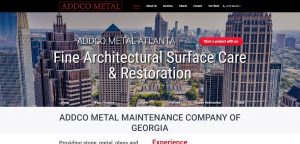Website Design in Cornelia, Georgia - 30531 Habersham County
Welcome to DS Ragland! We are your local website design experts, dedicated to helping businesses like yours create a strong online presence. With our team of skilled professionals, we are committed to delivering high-quality, customized websites that cater to your specific needs.
Local Expertise
We understand your community and target audience, enabling us to design websites that resonate with your local customers.
Responsive Layouts
We create websites that adapt seamlessly to different devices, guaranteeing a smooth experience for all users.
User-Focused Design
Our websites are designed with your customers in mind, providing an enjoyable browsing experience.
Get in touch with DS Ragland today, and let us help you create a powerful online presence for your business in the local area. Together, we can design a website that showcases your brand, attracts potential customers, and sets you up for long-term success.
Website Design Checklist
Goal Setting
1.1. Identify the purpose of the website (e.g., to inform, sell products/services, build community, etc.)
1.2. Define the target audience (demographics, interests, behavior)
1.3. Identify key competitors and analyze their websites for inspiration and differentiation
1.4. Define success metrics (e.g., website traffic, conversions, sales, etc.)Content Planning
2.1. Decide on the main pages and their hierarchy (e.g., Home, About Us, Services, Contact, Blog)
2.2. Plan the content for each page, keeping SEO and user experience in mind
2.3. Plan for content creation: text, images, videos, infographics, etc. (in-house or outsourced)
2.4. Plan for future updates to keep content freshDesign and Layout
3.1. Decide on a color scheme that aligns with your brand identity
3.2. Choose typography (fonts) that is easy to read and fits your brand
3.3. Sketch or wireframe the layout of the main pages (tools like Balsamiq, Sketch, Adobe XD can be used)
3.4. Create or source high-quality images, graphics, and other visual elements
3.5. Plan for a mobile-responsive designTechnical Aspects
4.1. Choose a domain name and register it
4.2. Select a web hosting provider and hosting plan
4.3. Choose a Content Management System (CMS) such as WordPress, Wix, or Squarespace
4.4. Install and configure the CMS on your web host
4.5. Select or create a theme or template that suits your design plan
4.6. Install and configure any necessary plugins/extensions for added functionalities (e.g., SEO, security, forms, e-commerce)Development
5.1. Set up the website structure based on the planned hierarchy
5.2. Add the planned content to each page
5.3. Implement the design elements (color scheme, typography, images, etc.)
5.4. Customize the theme/template as per your wireframe/layout
5.5. Ensure that the website is mobile-friendlyTesting and Debugging
6.1. Test website load speed and optimize if necessary
6.2. Check for broken links and fix any that are found
6.3. Test website on various browsers (Chrome, Firefox, Safari, Edge) and devices (desktop, tablet, mobile)
6.4. Conduct usability testing for user experience6.5. Test all forms and checkout process if it is an e-commerce siteSEO and Analytics
7.1. Implement on-page SEO (meta tags, keywords in content, alt tags for images)
7.2. Set up Google Search Console and submit the sitemap
7.3. Set up Google Analytics to track website metrics
7.4. Create and implement a basic SEO strategy for off-page optimization- Launch
8.1. Remove any “under construction” pages or notices
8.2. Launch the website and announce it on social media, email newsletters, press releases, etc.
8.3. Monitor website uptime and fix any issues as they arise - Post-Launch
9.1. Regularly update content and keep the website fresh
9.2. Monitor website metrics via Google Analytics and adjust strategy as necessary
9.3. Regularly backup the website and ensure security measures are up to date
9.4. Implement feedback from users to improve the website
Remember, creating a website is an ongoing process and will require regular updates and tweaks to stay relevant and effective.
Useful links for website ideas:











